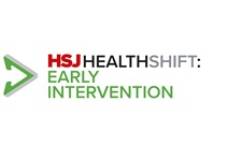What is the greatest risk to the new NHS? The answer is not financial meltdown or reform fatigue, although they remain serious threats. It is alignment.
This has always been a challenge in a healthcare system as large, complex and comprehensive as the NHS. But the essential characteristics of the transformation the service is undergoing magnifies the difficulty of aligning priorities, policies and ways of working. The NHS’s new approach is designed to mean local decisions will have greater weight than central diktats; the actions of regulators and the precedents they create should trump “top-down targets”; effective risk management should replace “doing what you’re told” as the best way to prosper; the increased contribution of the private sector will create a mixed economy of organisations with different cultures - a trend echoed by a change in the makeup of the service’s leaders, with clinicians bringing a different mindset to decision making; and managing inputs should be replaced by the more demanding task of improving outcomes.
Finally, there is the speed with which some elements of the reforms are being pushed through.
Every one of these changes makes it potentially harder for the NHS to act in an aligned way.
The frantic work that is continuing through the dog days of August has once again thrown a spotlight on the greatest vulnerability of the NHS’s new ecosystem.
We can see the difficulty of achieving alignment in Sir David Nicholson’s sensible decision to begin to shift management responsibility to the NHS Commissioning Board. For the rest of the financial year many new system leaders will find themselves serving two masters, as accountability for 2012-13 performance remains with some of the most influential old guard figures.
More significantly, the torrent of consultations and guidance pouring from the centre highlights the predicaments ahead. The National Quality Board’s draft report on the proposed “quality surveillance groups” points out that: “No longer will there be a ‘system manager’… to hold the ring in the event of failure”.
Most important of all are the details of how Monitor will attempt to align its treatment of different types of providers and procurement methods.
Alignment is a key “concern” for NHS Confederation chief executive Mike Farrar. He draws attention to the need for “national organisations… to ensure they are driving towards the same goals, not myriad conflicting policies”.
Alignment is also singled out by Nigel Edwards in his perceptive piece on payment reform - a very important, but too often ignored ingredient in the developing modus operandi.
He points out there is already “poor alignment” between NHS payment methods, before concluding they may grow even more complex.
Just because alignment will require more thought and effort in the new environment does not mean we are set on a wrong track. The idea of service redesign being driven by the right mix of local stakeholders as opposed to one size fits all national strategies, or a sensible regulatory function replacing a command and control system too susceptible to political short-termism, has much to commend it.
But working effectively in the future will require leaders to do more to align their behaviours as well as their priorities. It will do little good for national and local groups to work together if they remain wedded to their own interests - something it is very easy to do if you represent a body struggling to establish its influence or to justify its survival.
Despite the fearsomely technocratic nature of the reforms, it is likely to be the success or failure of those with a wide range of motivations in aligning their actions which will determine whether or not the summer of 2016 will be equally awash with plans for change.



























10 Readers' comments